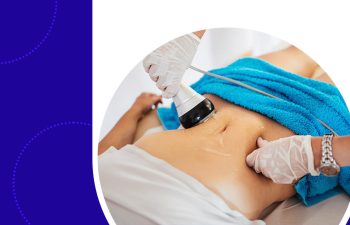5 Things to Know Before Beginning Medical Liposuction Training

Enrolling in liposuction training provides medical professionals with a great addition to have in their aesthetic medicine skillset. The procedure can be very lucrative for aesthetic medical professionals, and it can be used alongside other standard medical procedures—making it a sensible skill set to add to any practice. For instance, if you work in an OBGYN practice, liposuction procedures may be used alongside a breast reduction or to assist in correcting a cesarean section scar. Surgeons, ER doctors, and more are likely to find this skill set helpful from both a business perspective, and as a means to better treat their patients.
Liposuction Courses
If you are a medical professional that is interested in learning about Liposuction, AAAMS offers a basic lipo training course, and they offer advanced lipo training for those that are ready to hone their skills in liposuction and liposculpting. Before you get started, here are five things you should know prior to your Basic Liposuction Training.
What Liposuction Does
Firstly, it is important to understand what it is you are getting into. Liposuction is a type of fat-removal procedure used in plastic surgery. Fat is removed from specific areas of the body, such as the hips, belly, thighs, buttocks, back, arms, and under the chin or face to improve their shape. However, liposuction can also be done with other plastic surgeries, including facelifts, breast reductions, and tummy tucks.
Related Post: Top 3 Myths About Liposuction Surgery
Liposuction’s Anatomy
It is always important with aesthetic medical procedures to understand the anatomical makeup of the area you will perform treatment on. Knowing where essential organs, nerves, and muscles are located can help prevent serious complications during and after liposuction. You should also be aware of the places fat accumulates in the body and how not to miss key fat deposits when performing the procedure.
Who Is A Perfect Candidate
If you have done some research and know what liposuction does, then you will have a good idea of who qualifies as a candidate. If a potential patient wants something specific from liposuction like cellulite removal, they will not get what they are looking for. So it is important that you have clear expectations as to what liposuction can and cannot do, and that you set expectations with your patients accordingly.
Patients seeking liposuction need to be in good health and must be within at least 30% of their ideal weight. They should be a nonsmoker and have firm, elastic skin. Also, patients should not receive lipo if they have health problems with blood flow or have heart disease, diabetes, or a weak immune system. The more information you know, the better your communication will be with your patients to keep their minds at ease.
The Risks
You should start training with some common knowledge about the risks of receiving liposuction. Even though liposuction is a cosmetic surgical procedure, it is still surgery, so it comes with risks and higher training needs. There are a few possible risks directly related to liposuction, including bleeding, uneven fat removal, fluid accumulation, and damage to nerves, blood vessels, muscles, lungs, and abdominal organs. Knowing what to watch out for will not only help you while completing your aesthetics training but also in the future when you add liposuction to your medical practice.
Types of Liposuction
Depending on the program you choose, you will learn a specific form of liposuction. However, there are a few types:
- Tumescent liposuction is the most common technique. A sterile solution is injected into the area where the fat is to be removed. It consists of saline, lidocaine, and epinephrine. The solution makes it easier to suction the fat with less blood loss and pain.
- Ultrasound-assisted liposuction (UAL), uses sound wave energy under your skin to rupture the cell walls of the fat. This liquefies the fat so it can be suctioned out.
- Laser-assisted liposuction (SmartLipo), uses a laser to produce a burst of energy to liquefy the fat.
Having a basic knowledge of the different types of liposuction can help you understand your options and the direction you want to go. If you have a general knowledge base of liposuction and are interested in learning different techniques for liposuction procedures, check out the advanced aesthetic courses offered by the AAAMS.
Posted on behalf of
640 South San Vicente, Suite 410
Los Angeles, CA 90048
Phone: (310) 274-9955
info@aaams.net
Monday - Friday 9:00 AM – 5:00 PM
